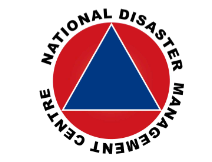Original Research
Modelling a critical infrastructure-driven spatial database for proactive disaster management: A developing country context
Submitted: 14 July 2015 | Published: 26 April 2016
About the author(s)
David O. Baloye, Department of Geography and Environmental Sciences, North-West University, Mafikeng Campus, South Africa; Department of Geography, Obafemi Awolowo University, NigeriaLobina G. Palamuleni, Department of Geography and Environmental Sciences, North-West University, Mafikeng Campus, South Africa
Abstract
The understanding and institutionalisation of the seamless link between urban critical infrastructure and disaster management has greatly helped the developed world to establish effective disaster management processes. However, this link is conspicuously missing in developing countries, where disaster management has been more reactive than proactive. The consequence of this is typified in poor response time and uncoordinated ways in which disasters and emergency situations are handled. As is the case with many Nigerian cities, the challenges of urban development in the city of Abeokuta have limited the effectiveness of disaster and emergency first responders and managers. Using geospatial techniques, the study attempted to design and deploy a spatial database running a web-based information system to track the characteristics and distribution of critical infrastructure for effective use during disaster and emergencies, with the purpose of proactively improving disaster and emergency management processes in Abeokuta.
Keywords: Disaster Management; Emergency; Critical Infrastructure; Geospatial Database; Developing Countries; Nigeria
Keywords
Metrics
Total abstract views: 4578Total article views: 7021
Crossref Citations
1. Feasibility Study of Tsunami Evacuation Routes Based on Road Performance Using the Indonesian Highway Capacity Manual
Cut Mutiawati, Fitrika Mita Suryani, M. Isya, Lulusi Lulusi, Renni Anggraini, Vimia Nabila Putri, Riky Rivinaldi
Communications - Scientific letters of the University of Zilina vol: 24 issue: 4 first page: F109 year: 2022
doi: 10.26552/com.C.2022.4.F109-F119

